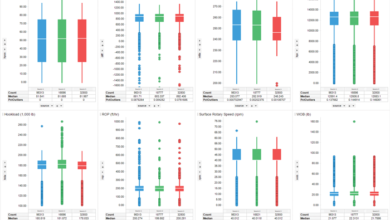Perspectives: Thad Dunham, Flat Time Reduction: Drilling industry should look to industrial engineering to reshape operations, reduce waste
By Alex Endress, Editorial Coordinator

A continued focus on cost reductions means drilling contractors are still looking for ways to reshape their operations to increase efficiency. Thad Dunham, President and Co-Founder of Flat Time Reduction, is helping companies to achieve such efficiency gains through an industrial engineering approach. “The principles of industrial engineering can work anywhere. The goal is to optimize processes and reduce waste,” Mr Dunham said. “If you look at everything as a process, whether it be an assembly line in a manufacturing plant or drilling a well, you can break it down into steps, get ideas from the folks doing the job, and you can improve it.”
After graduating from Purdue University in 2006 with a Bachelor of Science in industrial engineering technology, Mr Dunham joined Lowes Home Improvement as a Field Industrial Engineer and Performance Coach in Chicago. “I would visit each distribution center nationwide, and my job was to standardize operations,” he recalled. These standards targeted everything from shipping and receiving to restocking. “There are various jobs in the different warehouses, so I would go and learn about the tasks, break the job down into detailed steps and study it. Then I would standardize each job based on the data.”
After the housing market crash in 2009, however, Mr Dunham decided to move to Houston and start a new career in the oil and gas industry. “I saw the oil and gas industry as largely untapped by industrial engineers. If you look at other industries, many are already highly standardized. I realized oil and gas wasn’t necessarily one of these industries. To me, that was extremely exciting.”
By 2011, he had joined National Oilwell Varco (NOV) as Land Rig Process Engineer. In this position, he helped drilling contractors by collecting field data and implementing design changes based on the results. He also developed rig-up and rig-moving procedures for NOV rigs.
“My main job was to observe rig operations in the field, collect useful data and report back to the design team at NOV. The more time I spent out in the field, the more I realized there was a lack of quality procedures rig crews were using,” he said. “The procedures that crews did have were basically in a huge book that sat on a shelf in the pusher’s house, and nobody used the book. They needed something simple instead of a book collecting dust.”
To improve rig-move times for NOV’s Ideal rigs, Mr Dunham began to develop rig-moving procedures. In 2012, a project was initiated with Precision Drilling to assess their rig-moving operations. “We really looked into the entire process and broke it into detailed steps. We involved the crews and outlined everything – planning of services, time and equipment restraints, maintenance bottlenecks, geographical info – and then we simplified it.” By applying industrial engineering principles, Precision was able to consistently reduce its rig release-to-spud from an average 4.42 days to below 3.5 days. Results of the project were presented in IADC/SPE 167986 at the 2014 IADC/SPE Drilling Conference in Fort Worth, Texas.
In early 2014, Mr Dunham co-founded his company, Flat Time Reduction, with his wife Jillian Dunham, also an industrial engineer. “We had invested so much time in this work and knew others could benefit from it. We got some interest from companies about our engineering approach and decided to go for it.” Unlike other industry services that saw dips in demand when oil prices started falling in 2014, Mr Dunham said, demand for his company’s services actually increased in the downturn. “It doesn’t make financial sense for some companies to keep a dedicated process improvement team in house. That’s where we come in.”
The company soon began a partnership with Independence Contract Drilling and focused on fine-tuning their approach. FTR has since expanded and begun testing the technology side of process improvement by helping companies to improve efficiency through mobile apps. “As the workforce gets younger and more mobile-dependent, we see value in using mobile apps to enhance performance. The app could use a basic checklist on one rig or also track fleetwide performance, but our goal is to improve industry efficiency by any means necessary.”
Mr Dunham joined the IADC Rig Moving Committee in 2013 and moved into the role of committee Vice Chairman last year. The committee’s current focus is on establishing guidelines for night rig moving. There are currently no such standards for night rig moves.
“Moving rigs at night has become more of a common practice during the downturn, and our goal as a committee is to stay ahead of the curve and to help keep people safe in the field,” he said. The guidelines are tentatively scheduled for publication in late 2017. DC
Click here to read about learnings from the NOV project to streamline rig moves.




